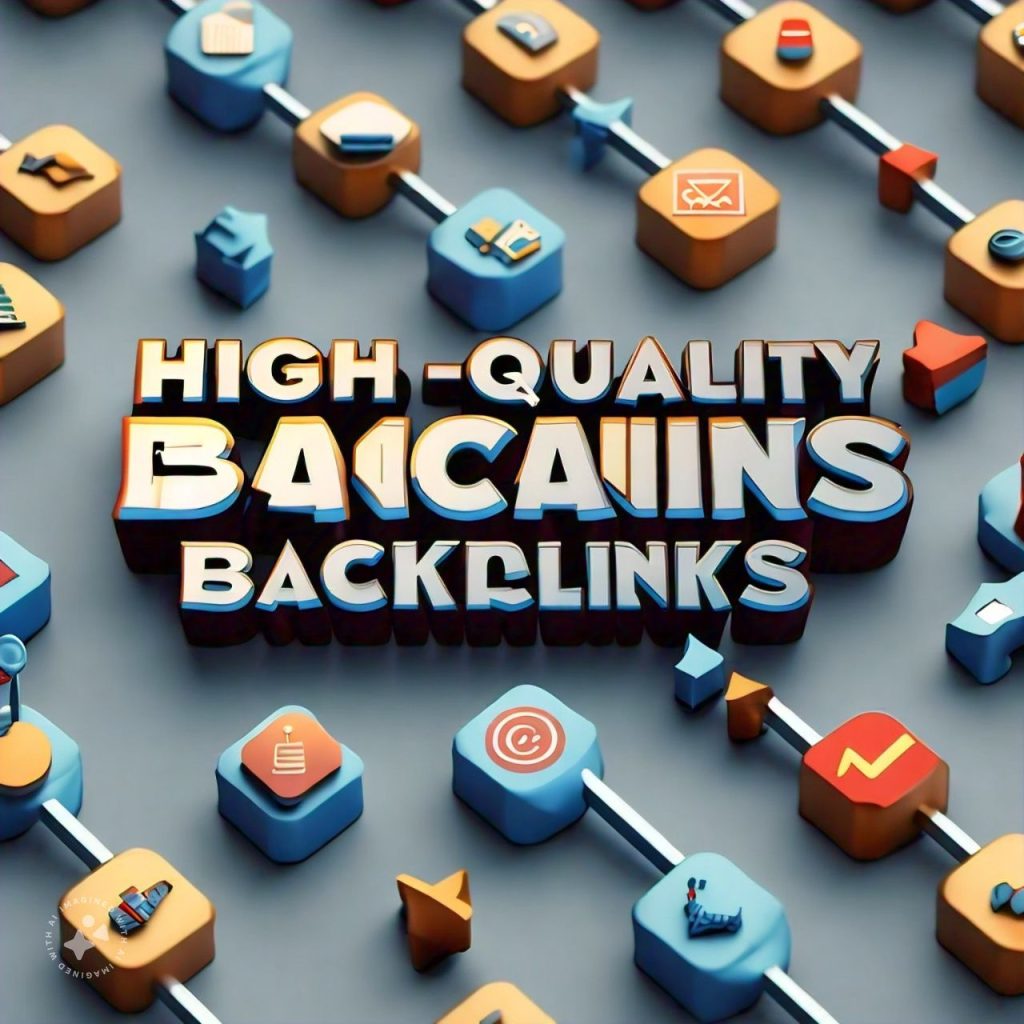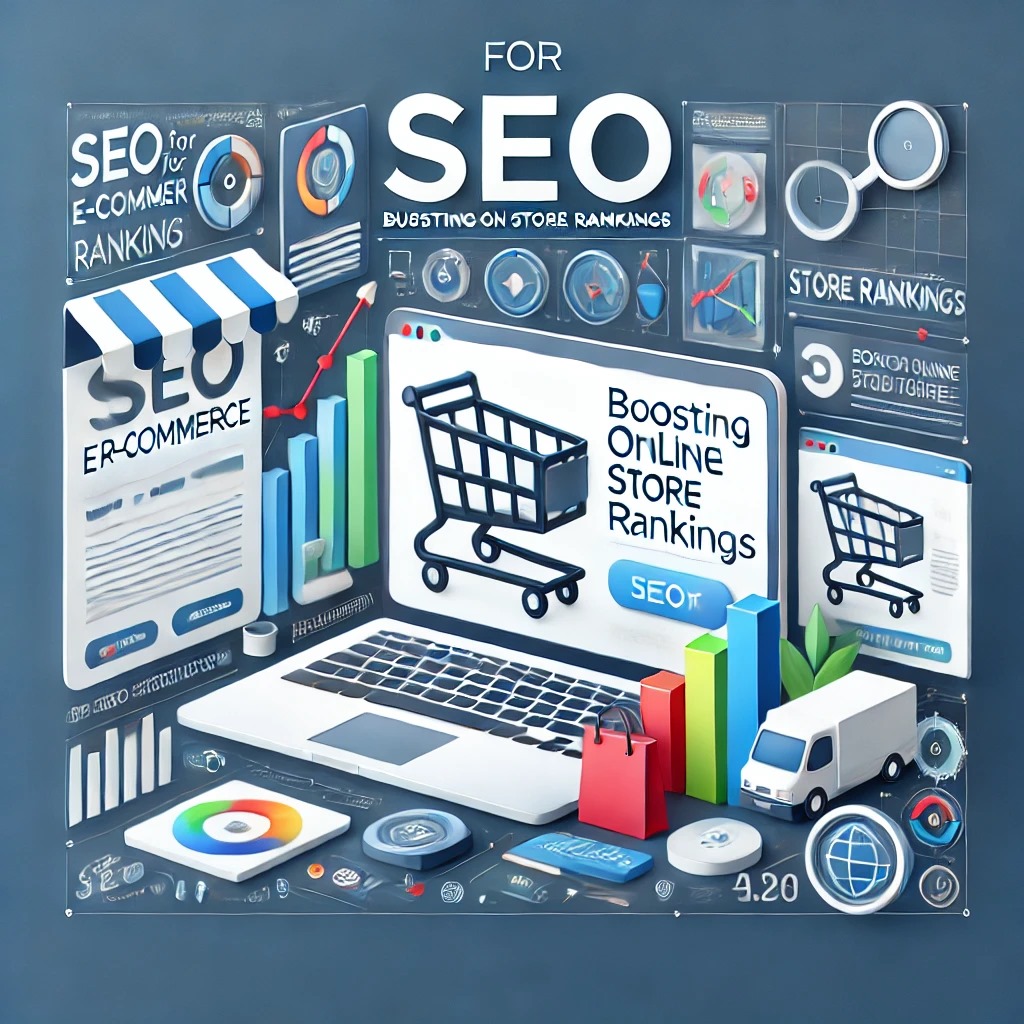SEO for E-commerce: Boosting Online Store Rankings

In the bustling world of e-commerce, visibility is key. But how do you stand out in a sea of competitors? The answer lies in effective search engine optimization, or SEO. SEO for e-commerce is not just about driving traffic. It’s about attracting the right kind of traffic.
Potential customers who are actively searching for the products you offer. But SEO for e-commerce is a unique beast. It’s not the same as general SEO. It requires a deep understanding of both your audience and the search engine algorithms. In this comprehensive guide, we’ll delve into the world of e-commerce SEO.
We’ll explore the importance of keyword research, on-page and off-page SEO strategies, and technical SEO. We’ll also discuss the role of content marketing and link building in boosting your online store’s rankings. Whether you’re an e-commerce business owner, a digital marketer, or an SEO professional, this guide is for you. Get ready to take your online store to the next level. Let’s dive in.
Understanding SEO for E-commerce
SEO is a critical component of any online business strategy. But in the e-commerce world, it takes on even greater importance.

E-commerce SEO involves optimizing your online store to rank higher in search engine results pages (SERPs). The goal is to attract more organic, or non-paid, traffic to your site. But it’s not just about getting more visitors. It’s about attracting the right kind of visitors. Those who are likely to convert into customers.
The Importance of SEO in E-commerce
In the world of e-commerce, competition is fierce. There are likely hundreds, if not thousands, of other online stores selling similar products. So how do you stand out? SEO is the key. By optimizing your site for search engines, you can increase your visibility. This means that when potential customers search for the products you sell, your store is more likely to show up in the results.
And the higher you rank, the more likely people are to click on your site. But SEO is not just about driving traffic. It’s about driving the right kind of traffic. People who are actively searching for the products you offer are more likely to convert into customers. This is why SEO is so critical for e-commerce businesses.
E-commerce SEO vs. General SEO
While the basic principles of SEO apply to all websites, e-commerce sites have unique challenges and opportunities. For one, e-commerce sites typically have a lot more pages than other types of sites. Each product page is an opportunity to rank for a specific keyword. But it also means there’s a lot more to manage and optimize.
E-commerce SEO also involves optimizing product descriptions, images, and other on-page elements. These elements not only help your pages rank higher but also improve the user experience. Finally, e-commerce SEO often involves optimizing for local search. If you have physical locations, you’ll want to make sure your store shows up in local search results. In the following sections, we’ll delve deeper into these and other aspects of e-commerce SEO.
Keyword Research: The Foundation of E-commerce SEO
Keyword research is the cornerstone of any SEO strategy. It’s especially crucial for e-commerce SEO.

Why? Because it helps you understand what your potential customers are searching for. It allows you to optimize your product pages and other content around these keywords. This increases your chances of ranking higher in search results.
But keyword research isn’t just about finding the most popular keywords. It’s about finding the right keywords for your business. These are the keywords that your target customers are using. And the ones that are most likely to lead to conversions.
Identifying High-Intent Keywords
High-intent keywords are those that indicate a strong intent to purchase. For example, someone searching for “buy running shoes online” has a high intent to purchase.

These are the types of keywords you want to target. Because they’re likely to lead to conversions. But how do you find these high-intent keywords? One way is to think about the buying journey of your customers. What are they likely to search for at each stage of this journey?
Tools and Techniques for Effective Keyword Research
There are many tools available to help with keyword research. Some of the most popular include Google Keyword Planner, SEMrush, and Ahrefs. These tools can provide valuable insights into keyword popularity, competition, and more.
Here are some tips for effective keyword research:
- Start with a broad keyword related to your products.
- Use keyword research tools to find related keywords and phrases.
- Look at the search volume for each keyword.
- Consider the competition for each keyword.
- Identify long-tail keywords, which are more specific and often less competitive.

Remember, the goal is not just to find popular keywords. It’s to find the right keywords for your business. The ones that will attract the right kind of traffic. And ultimately, lead to more conversions.
On-Page SEO Strategies for Product Pages
On-page SEO is a critical aspect of e-commerce SEO. It involves optimizing individual pages on your website. This includes your product pages.

Product pages are where conversions happen. So, it’s crucial to optimize them for both search engines and users. This involves using your target keywords in strategic places. Like the title, meta description, and product descriptions. But it’s not just about keywords. You also need to consider user experience. This includes things like page load speed, mobile-friendliness, and easy navigation.
Crafting SEO-Friendly Product Descriptions
Product descriptions are a key part of on-page SEO. They provide valuable information to both users and search engines.

However, writing SEO-friendly product descriptions can be a challenge. You need to include your target keywords. But you also need to make the descriptions engaging and persuasive.
Here are some tips:
- Use your target keywords naturally in the description.
- Highlight the key features and benefits of the product.
- Use persuasive language to encourage purchases.
- Make the description easy to read with short sentences and bullet points.
Remember, the goal is to provide value to your customers.
And to convince them to buy your product.
Optimizing Product Images and Videos
Images and videos play a crucial role in e-commerce SEO. They can make your product pages more engaging. And they can provide valuable information to your customers. But they need to be optimized for SEO.

Here are some tips for optimizing your images and videos:
- Use high-quality images and videos that clearly showcase your products.
- Include your target keywords in the file names and alt text of your images.
- Compress your images to reduce their file size and improve page load speed.
- Use video transcripts or captions to provide additional text for search engines to crawl.
Remember, the goal is to enhance the user experience.
And to provide additional context to search engines. This can help improve your rankings and drive more traffic to your product pages.
Optimizing Category Pages for Better Visibility
Category pages are another crucial part of e-commerce SEO. They help users navigate your site. And they can drive significant organic traffic.

But to do this, they need to be optimized for search engines. involves using your target keywords in strategic places, like the title, meta description, and page content. But it’s not just about keywords. You also need to consider the user experience. This includes things like page load speed, mobile-friendliness, and easy navigation.
Best Practices for Category Page SEO
Category pages should be treated as landing pages. They should be optimized for both search engines and users.

Here are some best practices:
- Use your target keywords in the title, meta description, and page content.
- Make sure the page is easy to navigate.
- Include clear and concise descriptions of each category.
- Use high-quality images to represent each category.
Remember, the goal is to make it easy for users to find what they’re looking for. And to provide valuable information to search engines.
The Role of User Experience in Category Page Rankings
User experience is a key factor in SEO. And it’s especially important for category pages.

If users can’t find what they’re looking for, they’ll leave. And this can hurt your rankings. So, it’s crucial to make your category pages user-friendly. This includes things like clear navigation, fast load times, and mobile-friendliness. Remember, a good user experience can lead to higher engagement. And this can improve your rankings and drive more organic traffic.
Technical SEO: Ensuring a Solid Foundation
Technical SEO is a critical part of e-commerce SEO. It involves optimizing your site’s infrastructure. This can have a big impact on your search engine rankings.
Technical SEO includes things like site speed, security, and mobile optimization. It also involves handling technical challenges. Like duplicate content, pagination, and more. Let’s take a closer look at these aspects.
Site Speed, Security, and Mobile Optimization
Site speed is a key ranking factor. If your site is slow, users will leave. And this can hurt your rankings.
Here are some tips to improve site speed:
- Compress your images.
- Use a content delivery network (CDN).
- Minimize HTTP requests.
Security is also crucial. Google prefers sites that use HTTPS. So, make sure your site is secure. Mobile optimization is another key factor. More and more people are shopping on their phones. So, your site needs to be mobile-friendly.
Handling Technical Challenges: Duplicate Content, Pagination, and More
Duplicate content can hurt your SEO. It confuses search engines. And it can lead to lower rankings.

Here are some tips to handle duplicate content:
- Use canonical tags.
- Implement a 301 redirect.
- Use the parameter handling tool in Google Search Console.
Pagination can also be a challenge.
It can lead to duplicate content issues. But there are ways to handle this. For example, you can use the rel=”next” and rel=”prev” tags. These tell search engines that the pages are part of a series. And this can help prevent duplicate content issues. Remember, technical SEO is crucial. It can have a big impact on your rankings. So, make sure to pay attention to it.
Content Marketing and SEO for E-commerce
Content marketing plays a vital role in e-commerce SEO. It helps to attract, engage, and convert customers. And it can significantly boost your search engine rankings. Content marketing involves creating and sharing valuable content. This content should be relevant to your target audience. And it should be optimized for search engines.
Here are some content marketing strategies for e-commerce:
- Create a blog to share useful information.
- Leverage user-generated content and reviews.
- Use videos to demonstrate products.
Let’s delve deeper into these strategies.
Creating a Blog to Support SEO Efforts
A blog can be a powerful tool for e-commerce SEO. It can help you rank for more keywords. And it can drive more traffic to your site.

Here are some tips for creating a blog:
- Write about topics relevant to your products.
- Use keywords in your blog posts.
- Link to your product pages from your blog posts.
A blog can also help you build trust with your customers. By providing valuable information, you can position yourself as an expert. And this can lead to more sales.

Leveraging User-Generated Content and Reviews
User-generated content (UGC) can also boost your SEO. UGC includes things like customer reviews and social media posts. And search engines love this type of content.
Here are some ways to leverage UGC:
- Encourage customers to leave reviews.
- Share customer photos on your product pages.
- Use customer testimonials in your marketing materials.
UGC can also help build trust with your customers. People trust reviews from other customers more than they trust advertising. So, leveraging UGC can lead to more sales.

Link Building and Off-Page SEO Tactics
Link building is a crucial part of SEO for e-commerce. It involves getting other websites to link to your online store. These links, known as backlinks, can significantly improve your search engine rankings. But not all backlinks are created equal. The quality of the linking site matters a lot. And so does the relevance of the link to your content.
Here are some off-page SEO tactics for e-commerce:
- Acquiring high-quality backlinks.
- Leveraging social media and influencer marketing.
Let’s explore these tactics in more detail.
Strategies for Acquiring High-Quality Backlinks
Acquiring high-quality backlinks is not easy. But it’s worth the effort. Because these backlinks can significantly boost your SEO.
Here are some strategies for acquiring high-quality backlinks:
- Create valuable content that others want to link to.
- Reach out to relevant websites and ask for a link.
- Use guest blogging to get links from relevant blogs.

Remember, the key is to focus on quality, not quantity. A few high-quality backlinks are better than many low-quality ones.
The Impact of Social Media and Influencer Marketing on SEO
Social media and influencer marketing can also impact your SEO. They can help you reach a larger audience. And they can drive more traffic to your site.

Here are some ways to leverage social media and influencer marketing:
- Share your content on social media to get more exposure.
- Collaborate with influencers to reach their followers.
- Encourage customers to share your products on social media.
Remember, social signals can influence search engine rankings. So, a strong social media presence can boost your SEO.
Measuring Success: Analytics and SEO Tools
SEO for e-commerce is not a one-time task. It’s an ongoing process. And to succeed, you need to measure your performance. Analytics and SEO tools can help you do this. They can provide valuable insights into your SEO efforts. And they can help you identify opportunities for improvement.
Here are some key areas to focus on:
- Tracking performance and identifying opportunities.
- The role of A/B testing in SEO for e-commerce.
Let’s delve into these areas in more detail.
Tracking Performance and Identifying Opportunities
Tracking your performance is crucial in SEO. It helps you understand what’s working and what’s not.

And it can help you identify opportunities for improvement. For example, you can track your rankings for specific keywords. If you’re not ranking high, you can optimize your content for those keywords. Or you can find new keywords to target. Remember, SEO is a long-term game. So, keep tracking your performance and making necessary adjustments.
The Role of A/B Testing in SEO for E-commerce
A/B testing is another important tool in SEO. It involves testing two versions of a webpage to see which performs better.
For example, you can test two different product descriptions. Or two different page layouts. The goal is to find out which version leads to better SEO results. Remember, even small changes can have a big impact on SEO. So, don’t underestimate the power of A/B testing.
Common E-commerce SEO Mistakes to Avoid
SEO for e-commerce can be complex. And it’s easy to make mistakes. But by being aware of common pitfalls, you can avoid them. And you can improve your chances of SEO success. Let’s look at two common mistakes:
Overlooking Search Intent and User Behavior
Search intent is crucial in SEO. It refers to the reason why someone conducts a specific search.

Are they looking to buy a product? Or are they looking for information? Understanding search intent can help you create content that meets your users’ needs.
Ignoring Technical SEO and Site Structure
Technical SEO is another area that’s often overlooked. But it’s crucial for your site’s visibility in search engines. And your site structure can affect your SEO too. A well-structured site is easier for search engines to crawl. And it can lead to better rankings. So, don’t ignore these important aspects of SEO.
Future Trends and Innovations in E-commerce SEO

The world of e-commerce SEO is always evolving. New technologies and trends are constantly emerging. And these can have a big impact on SEO strategies. Let’s look at a couple of these trends:
Voice Search, AI, and Personalization
Voice search is becoming increasingly popular. And it’s changing the way people search for products online. Artificial intelligence (AI) is also playing a bigger role in SEO. AI can help businesses understand their customers better. And it can provide a more personalized shopping experience.
Sustainability and Ethical Practices in SEO
Sustainability is a big trend in e-commerce. And it’s becoming more important in SEO too. Customers are increasingly looking for brands that align with their values. So, ethical and sustainable practices can boost your SEO. And they can help you build a stronger brand.
Conclusion and Next Steps
SEO for e-commerce is a complex, ongoing process. But with the right strategies, it can significantly boost your online store’s visibility.
Creating an E-commerce SEO Roadmap
Start by creating a comprehensive SEO roadmap. This should outline your goals, strategies, and key performance indicators (KPIs).
Continuous Learning and SEO Maintenance
Remember, SEO is not a one-time task. It requires continuous learning, testing, and optimization. Stay updated with the latest SEO trends and best practices. And regularly monitor and adjust your strategies to ensure optimal performance.



